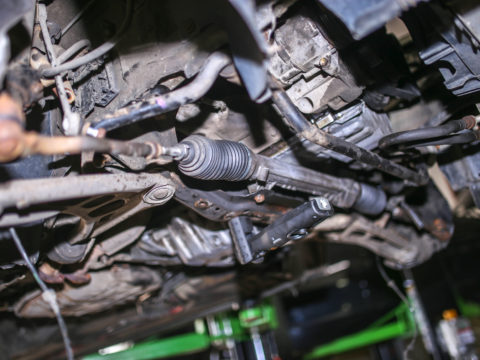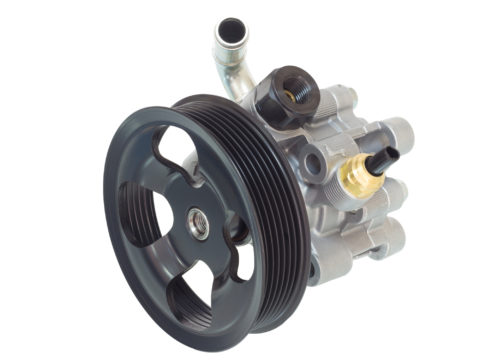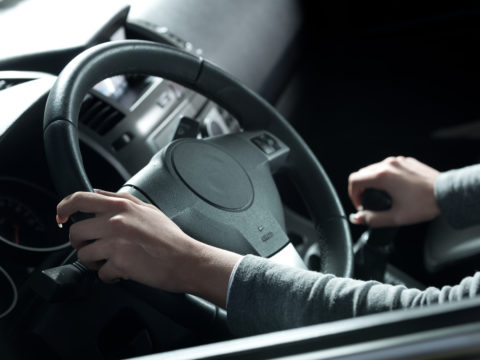No one wants car issues, but some things just happen. If you think your car may be having trouble with the steering angle sensor, then read on to learn about the common symptoms, causes, and solutions to this issue.
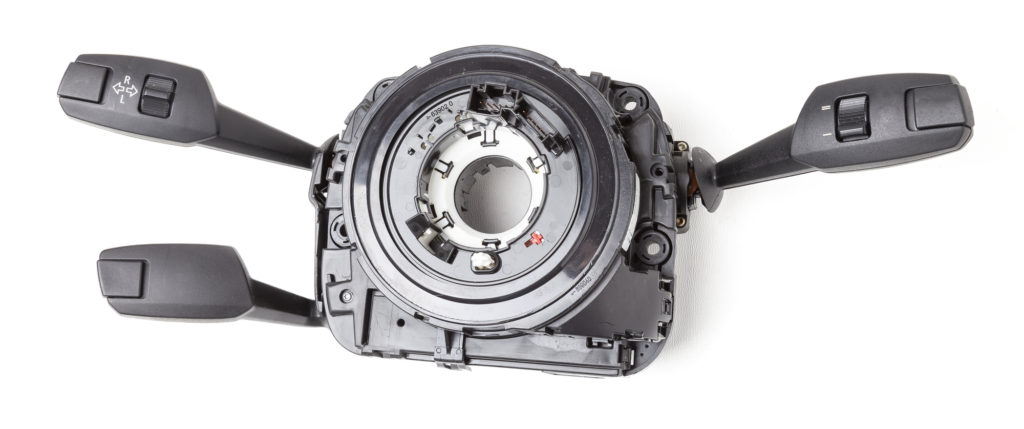
A steering angle sensor is a transmitter that monitors important steering data, such as the rate of rotation and the angle of the steering components. It is responsible for synchronizing the movements of the steering wheel to the car’s wheels and sending signals to other systems such as electric power steering.
Contents
How Does a Steering Angle Sensor Work?
By tracking the placement of steering components – a series of differently sized gears and magnets – the steering angle sensor can send data to the computer. The computer tells the sensor if the alignments and movements are correct and synchronized. If they aren’t, it will make adjustments.
Where is the Steering Angle Sensor Located?
The steering angle sensor is fixed on the steering shaft and wired to one of the onboard computers.
5 Symptoms of a Bad Steering Angle Sensor
The first signs of a bad steering angle sensor may be hard to spot, or they could be exceedingly apparent. If you notice anything out of the ordinary or any of the following issues, it may be due to the steering angle sensor.
1) Check Engine Light
Especially in older cars, if you see the check engine light come on, it could be your first indicator of an issue with the steering angle sensor. Originally, all electrical control units in cars were connected to the check engine light.
2) Traction Control Light
Similar to the check engine light, the steering angle sensor connects to the traction control system. If the traction control system receives the incorrect signal, it may trigger the traction control light, ABS light, or even airbag light.
3) Fighting or Lacking Power Steering
Since the steering angle control is there to assist in power steering corrections, a faulty one may cause the power steering to work incorrectly. It may receive the wrong signals or no signal at all, causing it to make incorrect adjustments or offer no assistance.
4) Strange or Awkward Steering after Wheel Alignment
If you just had the car serviced, and now the steering is off or feels difficult, it may be due to mechanic negligence. When the wheels are realigned, but the steering angle sensor isn’t reset, its signals will be inaccurate.
5) Variations in Steering Boost
If the steering sensitivity is changing in the span of one turn, then there is an issue with the steering angle sensor. The steering may feel too loose and forgiving one second and then too sensitive and tight the next.
What Causes it to Malfunction?
There are a range of issues that may cause a steering angle sensor to malfunction. Here are five of the most common issues.
1) Faulty Wiring
Harsh weather, poor car maintenance, poor repair jobs, mice, and general wear and tear could all be responsible for damaging the wiring in your car. If the wires get too messed up, they will be unable to transmit signals. No data will be able to get from the sensor to the computer.
2) Failure to Reset after Alignment
If you take your car in for service and have the tires realigned, but the mechanic forgets to reset the steering angle sensor, it will still be trying to read movements based on the previous positions of the tires. Take it back in, and have it reset.
3) Hard Faults
Hard faults occur when the computer fails to receive a signal from the steering angle sensor. The lack of signal prevents the traction control system from making any corrections to the steering, and power steering will cease to function.
4) Plausibility Faults
A plausibility fault occurs when the sensor data doesn’t align with other data the computer is receiving. If there is damage to the steering angle sensor, yaw rate sensor, or lateral acceleration sensor; or if the steering angle sensor is overly sensitive, then such an error may occur.
5) Broken Speed Angle Sensor
Sometimes parts just break. If the speed angle sensor decides to stop working, then you will need to replace it.
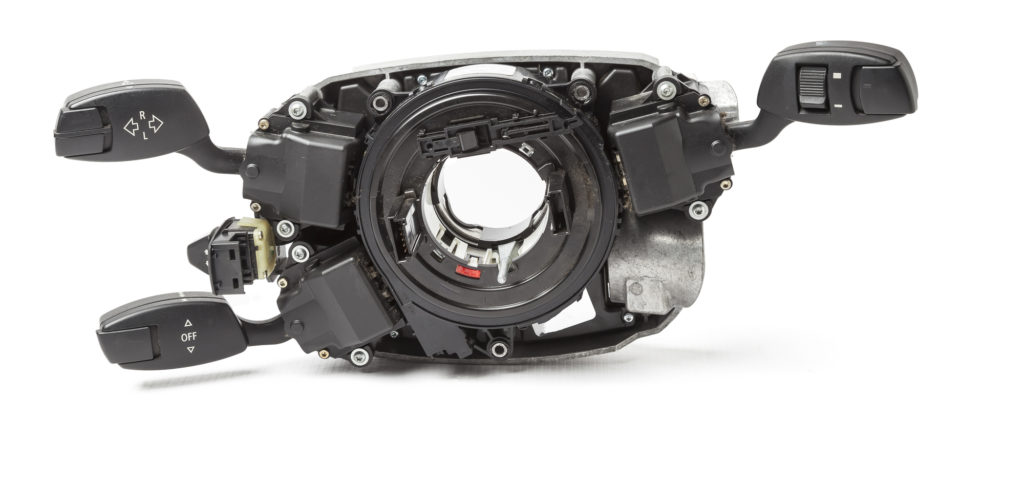
How to Fix a Faulty Steering Angle Sensor
While nobody wants to have to deal with a faulty steering angle sensor, the good news is that it’s remarkably painless to fix so long as you have the right device. If there is no damage to the sensor or wiring, then you can reset the sensor on your own in a couple of minutes.
Tools and Equipment Needed
You will need an OBD scanner to reset the steering angle sensor. The Foxwell NT650 is one of the more affordable scanners, and it has many functions, so it is all you will ever need.
Find OBD Port
The first step to resting the steering angle sensor is to connect the scanner to the OBD port. You can find the OBD port somewhere under the steering column.
Turn on Car
Insert the key and turn it to the second position so that only the accessories have power. Don’t turn on the engine.
Use OBD Scanner to Perform a Reset
Start by finding the SAS input on the OBD scanner, then input your vehicle type. Perform a steering angle match through the device. Make sure the wheels and steering wheel are perfectly centered.
Check for Faults
Follow the device’s instructions to ensure the reset worked correctly and there are no more faults.
Can You Reset a Steering Angle Sensor?
Yes, using a SAS-capable OBD device, you can easily reset the steering angle sensor right at home. If there is no damage to the sensor or wiring, then a reset may be all you need.
How Much Does its Replacement Cost?
Steering angle sensors typically cost between $120 and $250. With the addition of labor costs, the total price to replace a steering angle sensor is usually between $150 and $500.

